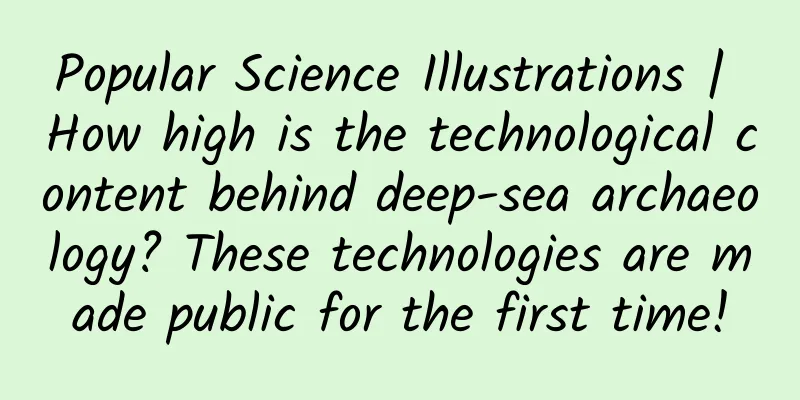From power generation to deep space exploration: Microalgae offer a sustainable future

|
Life originated in the ocean. In the ocean, the most basic and primitive single-cell seaweed is the nutrient at the bottom of the marine food chain, supporting the growth of marine organisms and the evolution of life. Seaweed has been around for 3.5 billion years and is considered a living fossil in the biological world. It still supports the diversity of the life system of marine life. Seaweed has many active ingredients and is rich in nutrients. The conditions for its growth are easy to create. It only needs water and light to grow happily. In the development of science and technology, more and more important values of seaweed are revealed one by one, such as in functional foods, food additives, agricultural breeding, environmental protection and other fields. Recently, a scientific study on the use of blue algae to generate electricity to support computer microprocessors for a whole year has aroused heated discussions in the scientific research circle. The potential power generation capacity of blue algae has given a glimpse of the dawn of sustainability to various low-energy IoT devices currently spread across the digital world. Hidden "Power" in Living Fossils The research was conducted by a team from Cambridge University, the University of Milan and ARM. The paper, titled “Powering a microprocessor by photosynthesis”, was published in the scientific journal Energy & Environmental Science. The entire experiment was conducted during the 2021 epidemic lockdown. The researchers began their research by placing a simple device on the windowsill. According to the paper, the small power generation container used for the experiment is only the size of a No. 5 battery, and the material of the device is also extremely simple, containing only four simple basic materials: aluminum, plastic, cyanobacteria, and water. The research team initially speculated that the principle of cyanobacteria power generation is either that the cyanobacteria itself generates electrons in the positive and negative poles of the device during photosynthesis, thereby generating current, or that the cyanobacteria create conditions similar to traditional electrochemical reactions, corroding the aluminum anode in the container to generate electrons. However, the experimental results showed that the aluminum anode did not degrade or corrode. Therefore, the research team inferred that the cyanobacteria generated most of the current during photosynthesis. During the experiment from February to August 2021, the cyanobacteria-powered microcomputer performed some basic calculations, calculating the sum of consecutive integers to simulate computing workload in a 45-minute cycle, consuming 0.3 microwatts of electricity, and 0.24 microwatts of electricity when in standby for 15 minutes. The computer will store the measured output current values in the cloud for analysis by the research team. The research team initially estimated that the system would stop working after a few weeks, but they did not expect that the cyanobacteria could continue to work day and night for six months to complete the experiment. After the experiment, the cyanobacteria continued to generate electricity and has been running until now. In the absence of light at night, the cyanobacteria can support the continuous operation of the computing system by releasing the energy stored in the photosynthesis process during the day. We can find that although cyanobacteria have the ability to generate electricity, the amount of electricity released is relatively weak, and it is currently only a system verification of cyanobacteria power generation. CJ Howe, the corresponding author of the paper, also said: "At this stage, installing a cyanobacteria generator on your roof will not provide enough electricity for your house. We still have a lot of research to do." The entire cyanobacteria power generation system is simple and easy to build. Compared with traditional batteries or solar energy, algae have less impact on the environment and can provide continuous electricity. The success of this cyanobacteria power generation verification system also makes cyanobacteria power generation, a sustainable, green, and low-cost energy method, a possible energy supply method for various sensor devices in the future Internet of Things. In some remote areas with middle and low incomes, it can provide some people with low-power mobile phones and sensor equipment power supply services. Microalgae: The new darling of biofuel Although the current generated by cyanobacteria is weak, if the limitations of scale and technology are overcome, the energy potential released by cyanobacteria will have broad prospects for application in the Internet of Things and digital world where everything is connected. We know that IoT devices need sustainable, low-cost, decentralized electricity to provide a power source. Although the power consumption of a single IoT device is very low, ranging from microwatts to milliwatts, if all IoT devices are counted, their number has reached billions, and it is estimated that by 2035 it will increase to one trillion, which also means that the energy and material resources consumed behind them are huge. If low-pollution, low-cost, sustainable biological resources such as cyanobacteria are used, it will also be of great benefit to a low-carbon, sustainable future. On May 10, the National Development and Reform Commission also issued the "14th Five-Year Plan for the Development of the Bioeconomy" (hereinafter referred to as the "Plan") for the first time, emphasizing the necessity of the development of the bioeconomy and clearly prioritizing the development of four key areas: biomedicine, bioagriculture, biomass substitution, and biosafety. The "Plan" regards synthetic biology as one of the national strategic scientific forces to accelerate the innovative development of the bioeconomy, and mentions it many times. The main biological sources currently used in synthetic biology include E. coli, yeast and microalgae. Microalgae have become a highly regarded base biological matrix in the field of synthetic biology due to their diversity of species and products, efficient photosynthesis and carbon fixation capabilities. Common microalgae can replace crops such as corn in the fields of food processing and feed. Taking feed protein as an example, according to relevant research, the protein yield of microalgae is 4-15 tons per hectare per year, which is much higher than the protein yield of wheat and beans of 0.6-1.2 tons per hectare per year. Microalgae can alleviate the food crisis caused by climate impact and lack of human resources. In recent years, microalgae have also become the new favorite of biofuels. Algae can fix carbon dioxide in the atmosphere through photosynthesis and convert it into sugars and plant proteins. They can also generate hydrogen and purify wastewater through reactions. They can provide humans with a cheaper, more environmentally friendly and sustainable energy supply and carbon fixation method. Among various types of clean energy, they have great potential that is no less than other energy sources. With the joint coordination and exploration of policies and technologies, and riding on the trend of low carbon and sustainability, microalgae will also release huge energy in the development of synthetic biology and become the main supply of biofuels in the future. Is the possibility of extraterrestrial colonization a little more possible? In the application of microalgae, from carbon fixation to electricity discharge to food supplementation, the corresponding issues are environmental protection, energy, and food crisis, which are the development dilemmas that we need to solve most at present. For organisms, sustainable survival is the goal of life reproduction and evolution. The growth process of microalgae can cover and provide a solution to these three development problems at the same time. In the evolution of biotechnology, if the technical limitations and scale-up problems of microalgae current development are solved, the entire growth of microalgae can be designed in a closed-loop system: under photosynthesis, microalgae capture carbon dioxide in the atmosphere and convert it into proteins, sugars and lipids in algae cells, while providing electricity and releasing oxygen. It is generally recognized that there are more than 300,000 species of microalgae on Earth, of which 30,000 are recorded, but only a dozen species such as Spirulina and Chlorella have been commercially developed. The entire microalgae industry still has a large market space. According to data from Credence Research, the global algae product market was worth US$33.9 billion in 2018 and is expected to reach US$56.5 billion by 2027, with a compound annual growth rate of 6.0% from 2019 to 2027. The future 100 billion blue ocean market for microalgae will come into the spotlight and gain more attention from academia, industry, and investment circles. Microalgae have strong tolerance and adaptability. The closed-loop system requires simple raw materials, just water and light, without the need for arable land, fertilizers, pesticides and large amounts of fresh water, thus avoiding many common ecological damages, such as deforestation, loss of biodiversity, desertification pollution, etc. The water used in the production of microalgae can also be reused after harvesting. Microalgae's carbon dioxide fixation efficiency and photosynthesis mechanism provide new opportunities and windows for sustainable development. Microalgae are currently mainly used in high value-added products, including medical and food fields. For example, some microalgae biosynthesis, genetic experiments, and the development of green and sustainable algae foods. In the future, the main focus will be on breakthroughs in energy technology applications, such as power generation mentioned above, and efficient carbon fixation. The current research focus of algae technology experts in biosynthesis is to break through the technical limitations of synthetic biology, develop new photobioreactor systems, new microalgae scale cultivation paradigms, release the energy application potential of microalgae, and realize future large-scale production as soon as possible. Microalgae can solve various crises on Earth and also have huge commercial space for deep space exploration. If you think a little more creatively, a closed-loop system using microalgae could also support some human activities on Mars. The main gas in the Martian atmosphere is carbon dioxide, which accounts for 96%. If this closed-loop system of microalgae can be transplanted to Mars, and provided that there is enough water, there will be no problem for a small number of researchers to be active on Mars. If we focus on deep space exploration, the microalgae system can also support our activities in the solar system. The gases we exhale are mainly nitrogen, carbon dioxide and oxygen. Among the currently known microalgae, there are more than 70 species that can fix nitrogen. These cyanobacteria release oxygen while fixing nitrogen, which is also a way to support human deep space exploration. Although these set conditions are relatively ideal, the development of science is based on these idealized settings, which has led to the rapid changes we are experiencing today. This is also the goal and motivation for future scientific research. Ancient algae, with billions of lives, have supported and fed countless lives, and have ushered in various changes of the times during the years of Earth's evolution. In the modern era of rapid technological change, we have the tools to explore and develop microalgae more deeply. This ancient life will continue to support us towards a green, sustainable future and deep space. |
<<: World Gut Health Day丨It is important to learn these healthy “gut knowledge”!
>>: 7 kinds of "aging agents" hidden in daily food, try to avoid them as much as possible!
Recommend
The official version of iOS 14.3 is here. Should I upgrade? Those who are confused should read this.
As long as Apple's IOS system is updated, I u...
Estimated time for Changchun City to be unsealed in 2022: When will it be fully unsealed? Attached are the conditions for lifting the lockdown!
According to the latest report, from 0:00 to 24:00...
From 100 million to 25 billion, the BMS market is developing rapidly
BMS (Battery Management System), also known as th...
What is Weibo Fans Link? Why choose Weibo Fanstong?
1. Introduction to Fantong What is Fantong? To pu...
How does Baodao Glasses manage user operations?
The company I’m going to dissect for you today is...
QQ unlimited group adding software + QQ group collection software_non-toxic software
QQ can be added to unlimited groups, and you can ...
The teeth you use to eat may have been fish scales a long time ago!
Did you know that the emergence of teeth is one o...
AutoForecast Solutions: Chip shortage may lead to a cumulative reduction of more than 3 million vehicles in global automobile production in 2022
According to foreign media reports, according to ...
How to get higher conversions on Zhihu? Zhihu oCPC delivery skills~
It is becoming increasingly difficult to operate ...
Apple releases iOS / iPadOS 17 third public beta
August 10 news, Apple today invites non-developer...
Tesla Model 3 deliveries may be delayed until late 2018
Technology news website BGR cited the latest rese...
WeChat 8.0.10 is fully updated. These 7 features are particularly useful. Have you discovered them?
This time, WeChat version 8.0.10 has been fully u...
How to increase user activity?
If the content of information products is not goo...
Kanshang TV C42 Pro review: good screen + good configuration, the first choice for small-sized TV
With the continuous improvement of modern people&...
Will Windows 7 really not work with new CPUs in the future?
A piece of news about Windows 10 these days has ma...









